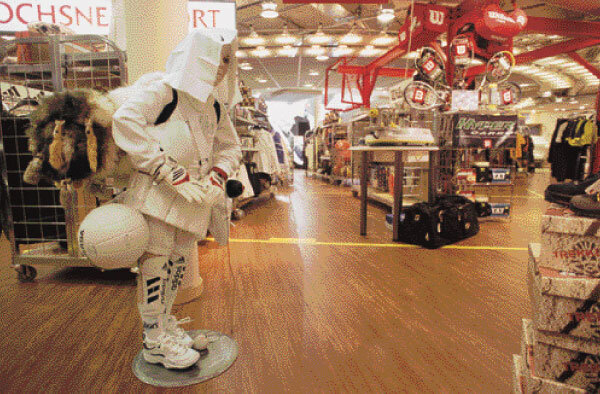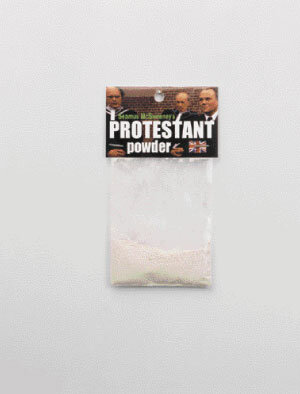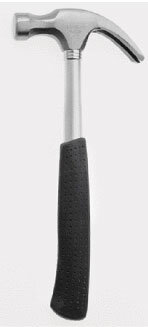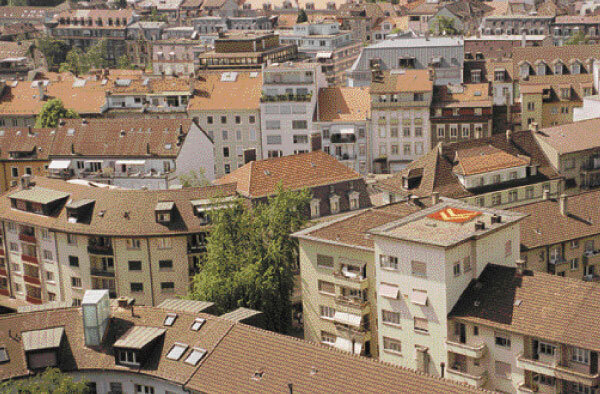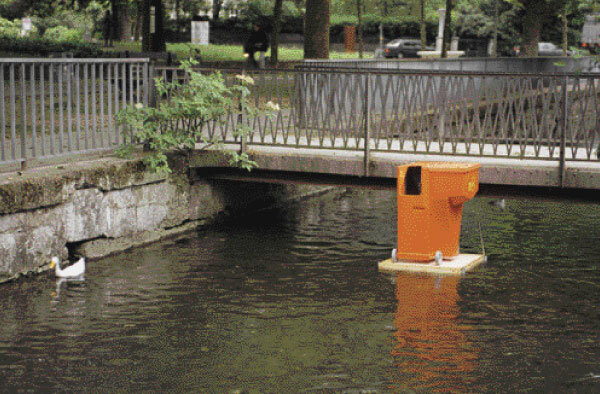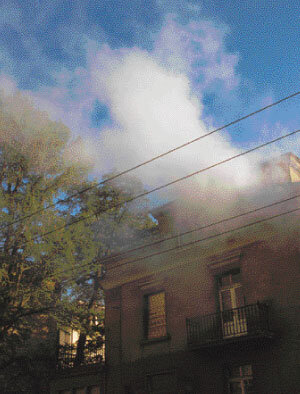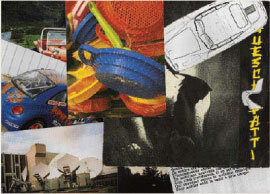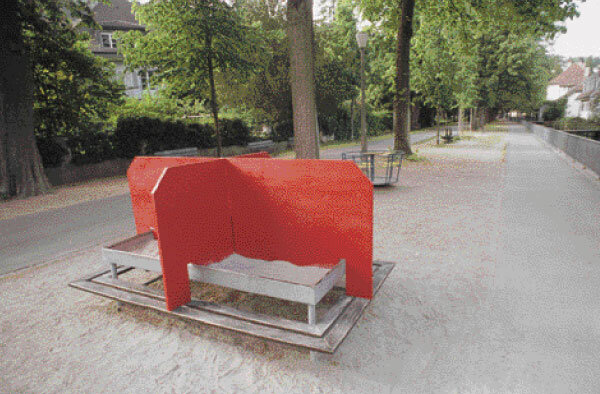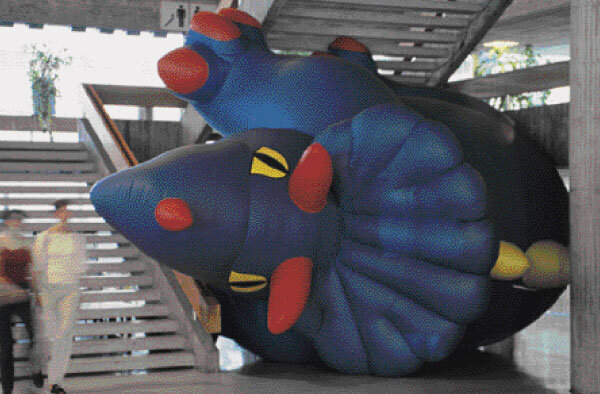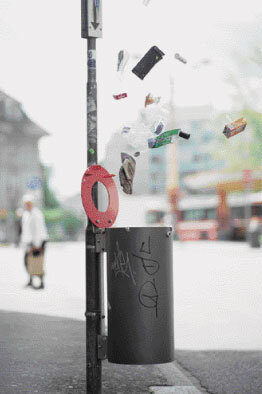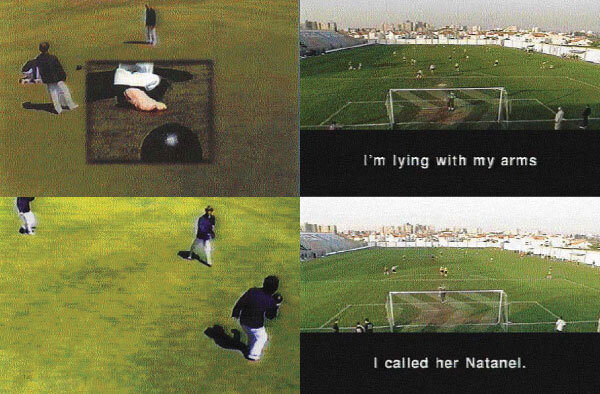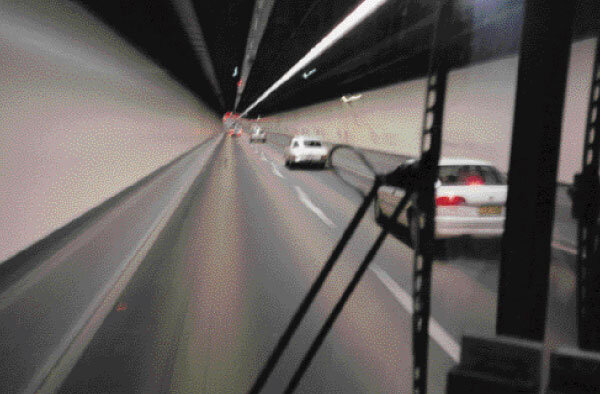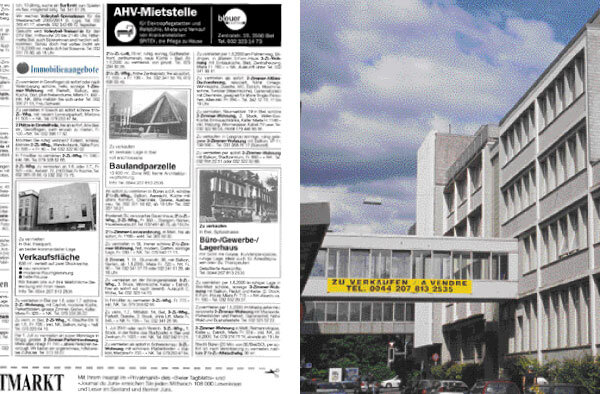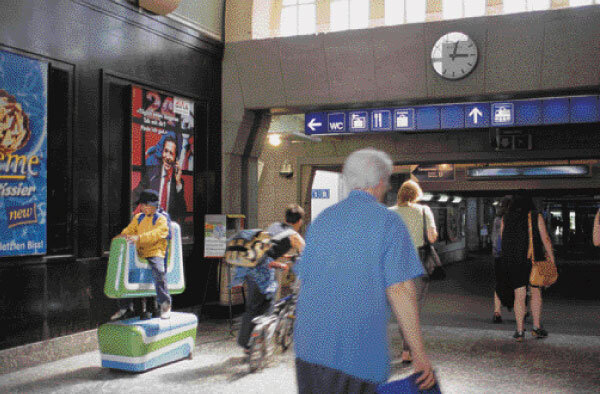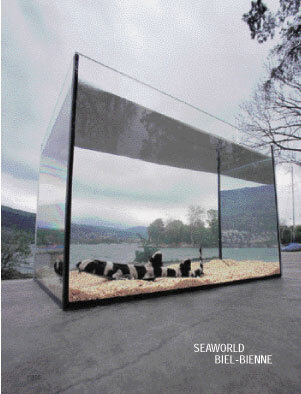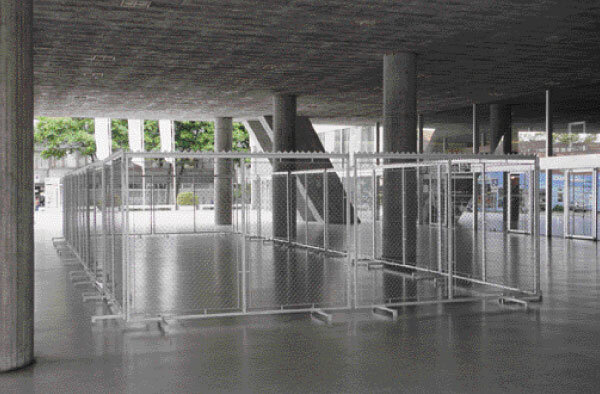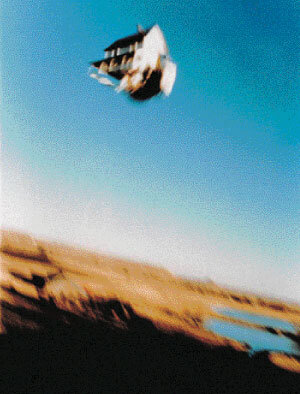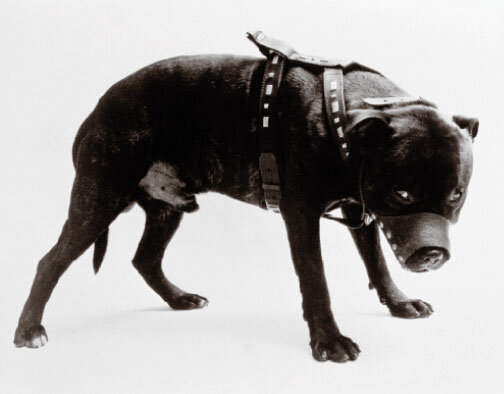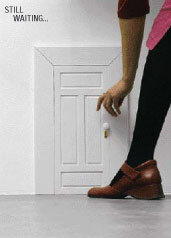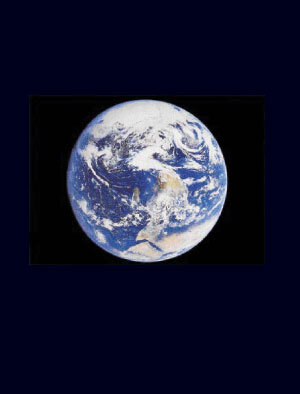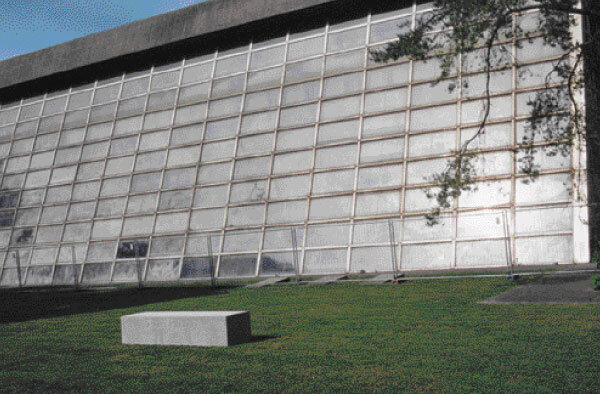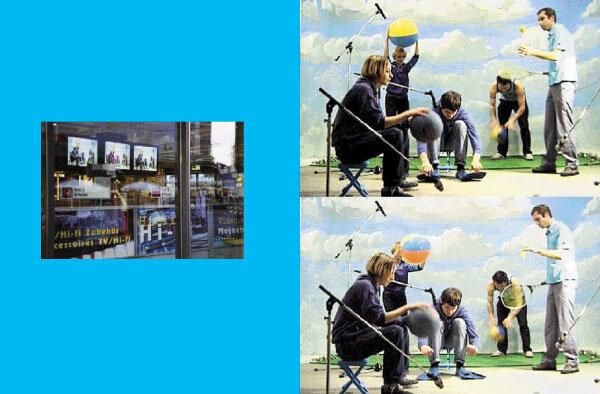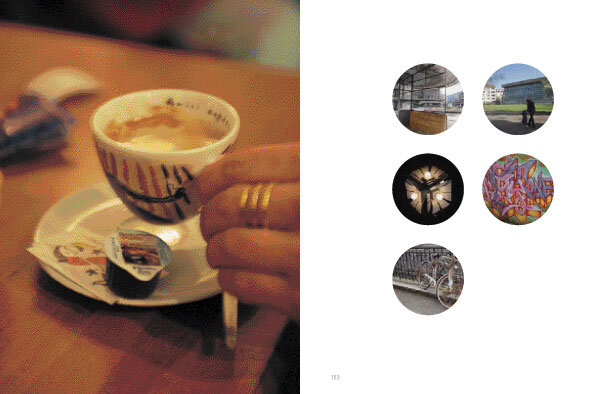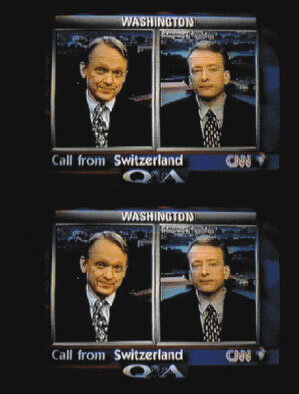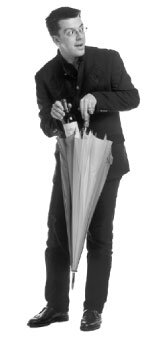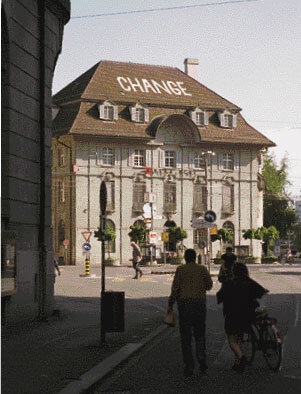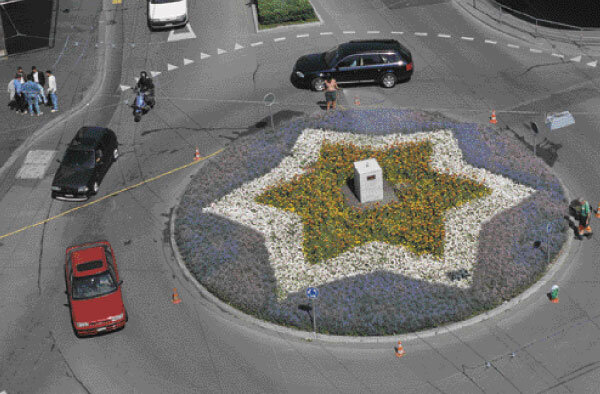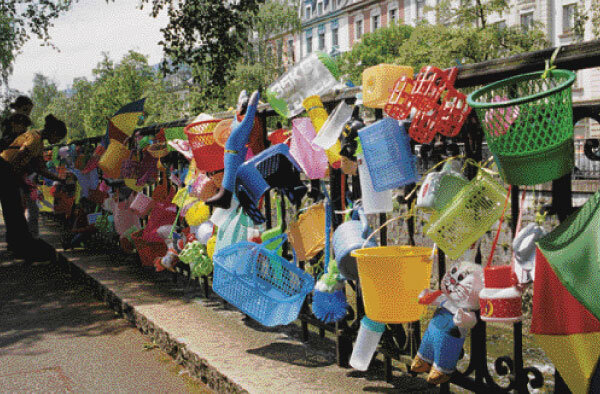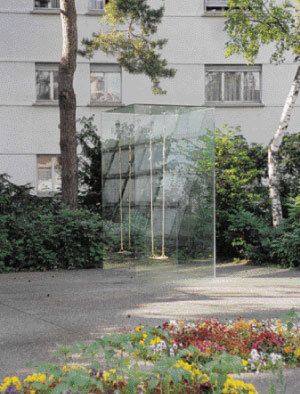TRANSFERT Art in urban space
Frank Perrin
FRANK PERRIN
THE JOGGER, HERO OF POSTMODERN LIFE
In its accepted conventional sense, the city used to be the enduring recipient of passage, the container of every kind of flux and flow, but today, it is in turn encompassed within the idea of passage. It is no longer the city that contains the passage that it was meant to convey, but, quite to the contrary, the idea of passage that encompasses the idea of a city henceforth unbounded and in a basic state of transit. What the city was supposed to accommodate has in the end submerged it. At the dawn of the third millennium, the city seems like a floating mass of data, the cartography of which now roams about like a Shakespearean ghost between the various networks and the city’s outskirts, between its exponential suburbs and its communicational masses.
«THE SKY ABOVE THE HARBOUR WAS THE COLOUR OF A TV SCREEN STUCK ON A BROKEN DOWN TRANSMITTER.» WILLIAM GIBSON, NEUROMANCER
We are entering a basic condition of offcentredness, the end of all possible forms of centralism for an ever more reticular, intricate reality.
Gone are the collective pleasures of the public place and 19th century daydreams of boulevards and ramblas... We have lost the city as something that is ours, and the city has been obliterated behind the exclusive issue of transport and movement. People no longer live in cities, they evolve in them. We have stopped inhabiting cities. For a long time now cities have no longer been dwelling-places, but places where there is just circulation.
Welcome to Connexion City. Control towers have replaced the agora, and signals of every kind have replaced all the old possible convergences. Just as Chicago was the laboratory of 20th century urban America, so Los Angeles today is inventing the economic forms and cultural activities and structures which will fashion urbanity across the globe.
«FAUSTLIKE ECONOMIC RESTRUCTURING, SOCIAL POROUSNESS, ANTISEMITIC ELITES, FIERCE COMPETITIVENESS AROUND CENTRAL HUBS, ADMINISTRATIVE FRAGMENTATION AND POLITICAL EXCLUSION OF THE INNER CITY.»
MIKE DAVIS, CITY OF QUARTZ: EXCAVATING THE FUTURE IN LOS ANGELES.
Los Angeles, year 00, tomorrow’s city, with neither pedestrians nor strollers nor any possibility of drift. The street has been emptied, and the stroller expropriated by the noiseless streams of cars. In this setting of recent desertification, there are just a few joggers left, and their other variants on skates, filling a territory growing ever more vacant. As a figure of unlikely resistance in the encroachment of a spreading wilderness, with each stride he repeats this now impossible and paradoxical belonging. As a form of heroism with no horizon other than the straight line lying ahead of him, in his stubborn soliloquy he declares a territory now closed in on itself – keep to the line, monitor heartbeats, balance efforts, link up the strides, find trajectories, create future developments.
«IT WOULD BE BETTER TO BE LIKE A TAXI, QUEUE, VANISHING LINE, TRAFFIC JAM, BOTTLENECK, RED AND GREEN LIGHTS, SLIGHT PARANOIA, DIFFICULT RELATIONS WITH THE COPS. TO BE A BROKEN, ABSTRACT LINE, A ZIGZAG SLIPPING «IN BETWEEN». GRASS IS SPEED.» GILLES DELEUZE, DIALOGUES
In this advanced landscape, the jogger – asphalt surfer – is the last man announcing the death or twilight of urbanity, and at the same time he points to this new relationship with the city to come. This announcement, uttered while jogging, is repeated every morning, or as often as possible, in an everlasting comeback asserting an involvement in real time with activity, body, work and city. As such, the jogger in his solitude embodies the pathetic superman of tomorrow’s cities...
After Baudelaire’s flâneur, Surrealist (aimless) strolling (déambulation), Benjamin’s passerby, and the Situationists’ drift (dérive), the jogger is the lonesome hero who has best embodied the recent relationship with the city and its economy for the past two decades.
The early 1980s witnessed the explosion of jogging and aerobics in a precise sociohistoric configuration. And these days the phenomenon has achieved its natural dimension, unofficial, spontaneous and worldwide, like a secret nation and off-the-cuff network. People who run do so out of some innermost need, not because it’s fashionable. In France, there are reckoned to be about 2,100,000 people who jog for at least an hour a week ; in Europe, close to 20 million ; and in the world more than 100 million regular joggers, not belonging to any kind of club or association, not competing, like a silent religion where nothing is written, setting up, by way of a spontaneous impulse, a powerful and secret relationship with body, city and work. The jogger, nowadays, is the hero of postmodern life – resistance without any message attached, the final walker in terminal urbanity, the last player in the advanced capitalist city.
«JOGGING IS AN ENDURANCE SPORT THAT IS PRACTISED OVER DISTANCES OF SEVERAL MILES. THE PACE MUST BE AS CONSTANT AS POSSIBLE, WHICH IMPOSES A REGULAR HEARTBEAT AND A STEADY STRIDE ON THE JOGGER.» AMBY BURFOOT, THE PRINCIPLES OF RUNNING
AMBY BURFOOT, THE PRINCIPLES OF RUNNING
A little like the artist, the jogger must keep to a line, both of effort and conduct, and pursue something simple and yet paradoxical. As a crypto-militant linked up with today’s dilemmas, on the edge and out of steam, the jogger and the artist hook up, each in their own way, with the given context, into which they work vanishing lines.
We are a generation that no longer recognizes itself in confrontation or diversion, but rather in every manner of dodge and slip. The success of jogging in the 1980s, like the revival of skateboarding and roller skating and blading in the 1990s point to this latest relationship with urbanity. The jogger and his kin replaced the demonstrator and his horde a long time ago, and collective rollerskating events are now replacing the collective delights of Mayday marches. New individualism for some, deepseated nomadism for others, as a tarmac surfer, the lifestyle in both city and space is now marathon-like. Because it is in gliding and skimming along that the context is appropriated and tamed. Without anything head-on, like the caress that has about it what fisticuffs cannot have, the silent jogger pounds the streets, reappropriating what we have lost. With the artist and the jogger, well removed from eyecatching appearances, combining the subtlety of breathing and the fierceness of the effort, in the rhizome-like reality of cities, signs and data, there is set in motion something that in the final analysis is simply based on nothing but a long-drawn-out labor. The jogger in his strides, like the artist in his activities, now entertains this secret relationship with the city of tomorrow. It is no longer a matter of taking on the city, but of working our way into it.
Links: Brooks Stanwood, Jogging • Amby Burfoot, The Principles of Running • Holt David, Running Dialogue • Martin Heidegger, Chemins qui ne mènent nulle part • Karl Gottlob Schelle, L’art de se promener • Marc Augé, L’impossible voyage • Guy Debord, Internationale situationniste • Fukuyama, La fin de l’histoire et le dernier homme • Hakim Bey, TAZ • Frédéric Fournier, La beauté, la rue (Blocnotes 11) • Armelle Leturcq, Frank Perrin, Géographies transformatrices (Blocnotes 5) • Frank Perrin, Expanded Mix (Blocnotes 17) • Gilles Deleuze, Mille Plateaux • Paul Virilio, Un paysage d’événements • Mike Davis, City of Quartz. Los Angeles, capitale du futur.
